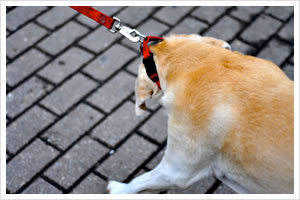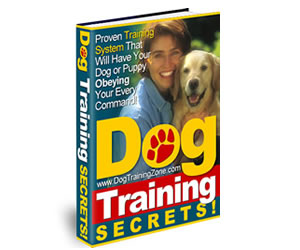Обука пса да не Пулл Он Тхе Леасх
 Повлачењем на повоцу је један од најчешћих мисбехавиорс видети на свим врстама паса. Штенци и одрасли пси подједнако често се могу видети узимајући њихове власнике за шетње, уместо обрнуто. Повлачењем на повоцу може бити много више од напорних навике. Поводац вуче може довести до побегне у случају прекида у крагном или леасх, и ван контроле, офф поводац пас може бити и деструктивна и опасна за себе и за друге.
Повлачењем на повоцу је један од најчешћих мисбехавиорс видети на свим врстама паса. Штенци и одрасли пси подједнако често се могу видети узимајући њихове власнике за шетње, уместо обрнуто. Повлачењем на повоцу може бити много више од напорних навике. Поводац вуче може довести до побегне у случају прекида у крагном или леасх, и ван контроле, офф поводац пас може бити и деструктивна и опасна за себе и за друге.
Леасх повлачењем може резултирати из низа различитих ствари. У неким случајевима, пас може једноставно бити тако узбуђен да иде у шетњу да он или она не може да се контролише. У другим случајевима, пас себе види као вођи чопора, а он или она једноставно узима "лидерску позицију" на предњој страни паковања.
Ако узбуђење је мотивација за узицу вуче, једноставно давање пса неколико минута да се смири често може бити од велике помоћи. Једноставно стајати са псом на узици за неколико минута и пустити почетни узбуђење предстојећег хода пролазу. Након почетног узбуђења ахс нестало, многи пси су спремни да иду мирно на свом леасх.
Уколико је проблем један од контроле, Међутим, неки преквалификације могу бити како. Сва обука пас почиње са власником њега или себе успостави као Алпха Дог, или вођа паковање, and without this basic respect and understanding, no effective training can occur. For dogs exhibiting these type of control issues, a step back to basic obedience commands is in order. These dogs can often be helped through a formal obedience school structure. The dog trainer will of course be sure to train the handler as well as the dog, and any good dog trainer will insist on working with the dog owner as well as the dog.
The basis of teaching the dog to walk calmly on the lead is teaching it to calmly accept the collar and lead. A dog that is bouncing up and down while the collar is being put on will not walk properly. Begin by asking your dog to sit down, and insisting that he sit still while the collar is put on. If the dog begins to get up, or gets up on his own after the collar is on, be sure to sit him back down immediately. Only begin the walk after the dog has sat calmly to have the collar put on, and continued to sit calmly as the leash is attached.
Once the leash is attached, it is important to make the dog walk calmly toward the door. If the dog jumps or surges ahead, gently correct him with a tug of the leash and return him to a sitting position. Make the dog stay, then move on again. Repeat this process until the dog is walking calmly by your side.
Repeat the above process when you reach the door. The dog should not be allowed to surge out of the door, or to pull you through the open door. If the dog begins this behavior, return the dog to the house and make him sit quietly until he can be trusted to walk through the door properly. Starting the walk in control is vital to creating a well mannered dog.
As you begin your walk, it is vital to keep the attention of the dog focused on you at all times. Remember, the dog should look to you for guidance, not take the lead himself. When walking, it is important to stop often. Every time you stop, your dog should stop. Getting into the habit of asking your dog to sit down every time you stop is a good way to keep your dog’s attention focused on you. Make sure your dog is looking at you, then move off again. If the dog begins to surge ahead, immediately stop and ask the dog to sit. Repeat this process until the dog is reliability staying at your side. Each time the dog does what you ask him to, be sure to reward him with a treat, a toy or just your praise.
Remember that if your dog pulls on the leash and you continue to walk him anyway, you are inadvertently rewarding that unwanted behavior. Dogs learn whether you are teaching them or not, and learning the wrong things now will make learning the right things later that much harder. It is important to be consistent in your expectations. Every time the dog begins to pull ahead, immediately stop and make the dog sit. Continue to have the dog sit quietly until his focus is solely on you. Then start out again, making sure to immediately stop moving if the dog surges ahead.





